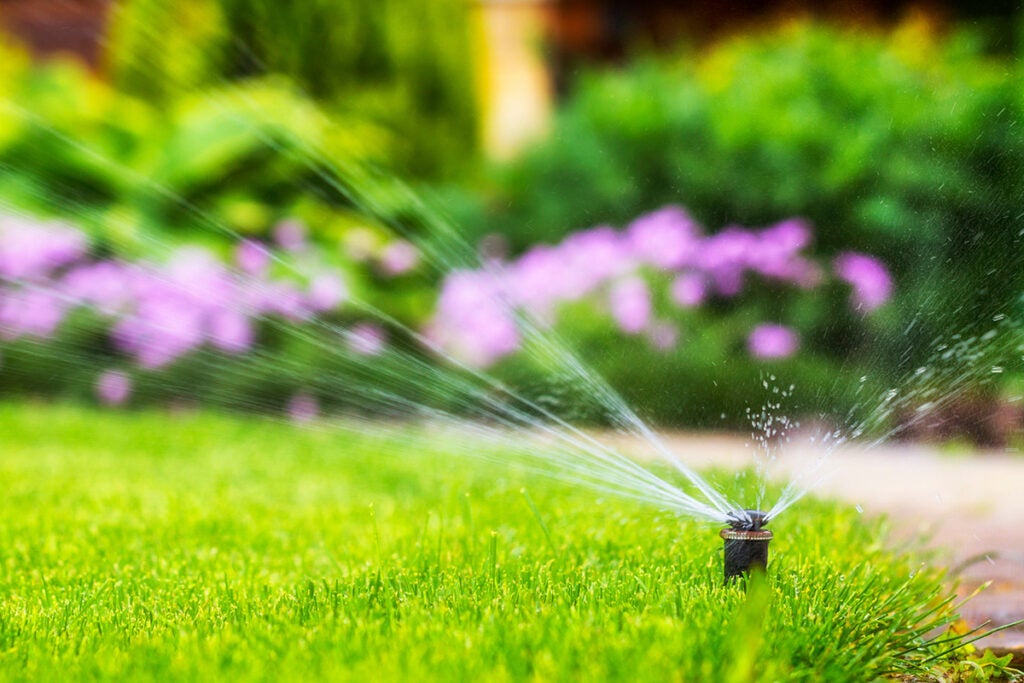Home Lawn Watering Guidance
Wentzville Takes Measures to Prepare Community for Lawn Care during a Drought
Summer is here with very dry weather conditions, and lawn irrigation demand is already hitting record-high levels. Wentzville is following a proactive approach and is taking the lead in recommending smart water usage by asking residents to adjust their lawn irrigation schedules. Since outdoor water use equates to 80 percent of summer demand, the City wishes to encourage a balanced distribution of lawn irrigation throughout each week. This small change will help the City ensure the sustainability of its water resources while protecting lawns during these extended dry weather conditions.
Drought is a growing concern in Missouri this year, and Wentzville recognizes the importance of conserving water which is a limited resource. By adopting lawn management techniques during June, July, August and September, residents can successfully reduce outdoor water consumption, save money and improve the chances for survival of an established lawn during these drier and hotter months.

To facilitate this transition, and promote responsible water usage, Wentzville has put together valuable tips and guidance to maintain lawns during dry summer months and to prepare lawns for an extended period of drought.
The information below will help residents make informed decisions about their lawn irrigation practices.
- Balancing irrigation demand: Residents with established lawns are encouraged to use a three-day lawn irrigation schedule that is split by street address number. Homes with an even-numbered street address will irrigate on a Monday, Wednesday, Friday schedule while odd-numbered street addresses will use a Sunday, Tuesday, Thursday schedule. This split schedule helps prevent excessive strain on the water supply and promotes equal distribution of watering resources.
- Reduce Watering Run-Off: Each individual cycle in an automated irrigation zone should be a maximum of 10 minutes in length. The cycle may be repeated to reach the desired total water application for that day.
- Efficient Watering Techniques: Residents are urged to schedule watering of established lawns for a maximum of three days per week and to reduce total weekly watering time by as much as 25% during most weeks. This means for lawns typically receiving one inch of water per week, irrigation goals are three-fourths inch of water per week or one-fourth inch per watering day. For an irrigation area with 1,000 sq. ft. of grass, three, 10-minute cycles will provide one-fourth inch of water.
- Deep Lawn Watering: For a single watering day out of every two to three weeks, when less than one-fourth inch of rain has fallen, lawn irrigation may be doubled on a single day for extra deep lawn watering.
- Protect the Dormant Established Lawn: Dormant lawns may show a lot of brown growth, but they do not easily pull out of the ground. Mow dormant lawns using the tallest mower height during the summer heat or drought conditions. Avoid the application of fertilizers during the summer months as well, as fertilization requires additional irrigation needs.
- How to Protect Young Sod: Young sod lawns, those three to four years old, may need extra irrigation water because their root systems have not become fully established. These lawns may benefit from one extra water day on a Saturday.
- How to Protect New Sod: New sod lawns, those less than three years old, may need daily watering during the summer because roots are not fully established.
- Indoor Water Uses: Indoor water use during a summer drought is best scheduled outside the peak morning irrigation hours, which are 5-8 a.m. Residents should consider completing necessary tasks such as laundry or car washing during afternoon and evening hours when lawn irrigation demand is lowest. Residents may also adjust dishwashing, bathing and other water uses to afternoon and evening hours to help balance total daily water demand.
More Home Lawn Watering information is available from the University of Missouri Extension.
